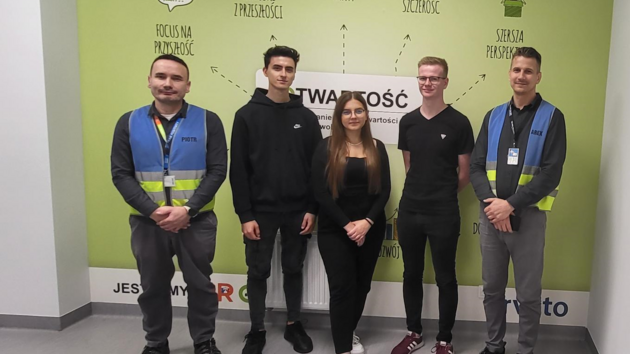Meeting at Arvato company
In the first part of the meeting, the Students were introduced to a presentation given by experts from Arvato. It was rich in knowledge and provided a better understanding of the complexity of warehouse processes. It also showed how in logistics, continuous optimization is important, as evidenced by Arvato's actions, as their warehouse is undergoing, another remodeling to increase storage space and streamline operations.
After the presentation, the Students had the opportunity to tour the Arvato warehouse. During this part of the visit, it was possible to take a close look at the theoretical concepts that were presented earlier. The 5 main logistics processes were observed in practice: goods receipt, picking, packing, shipping and order returns. In addition, technologies used in the warehouse were observed.
The students also learned about Arvato's green initiatives, such as sustainable warehousing practices to reduce environmental impact. It was extremely inspiring to see how theory is transformed into practice, and how modern technologies are used to improve warehousing processes and deliver quality service to customers.
The students also had the opportunity to discuss with representatives of the Arvato company.
About the project
Project title: Analysis and identification of opportunities and threats to the e-commerce warehouse in the fashion industry - potential directions of development.
Supervisor: Dr. Joanna Górniak, Department of Logistics and Innovation
Students: Hubert Denert, Dominika Gabrysiak, Mateusz Tomczak, Logistics
Partner: Arvato Polska Sp. z o.o.
Project description: The project focuses on the analysis and identification of opportunities and threats, which concern the e-commerce warehouse in the fashion industry, from various points of view. As a result, a strategy is planned to improve the functioning of the warehouse.
Project objectives: Analysis and diagnosis:
- competition and identification of threats to the e-commerce warehouse in the fashion industry;
- consumer preferences regarding payment methods and forms of delivery of online orders (detailed identification of the most and less popular options);
- consumer preferences for online shopping with a particular focus on the propensity of customers to purchase products online from sustainable companies.

